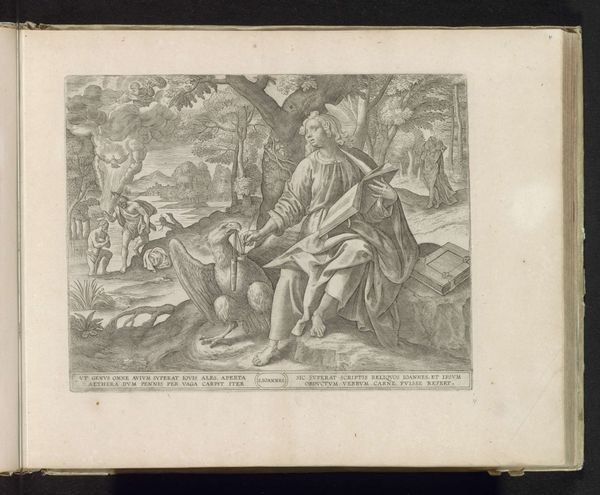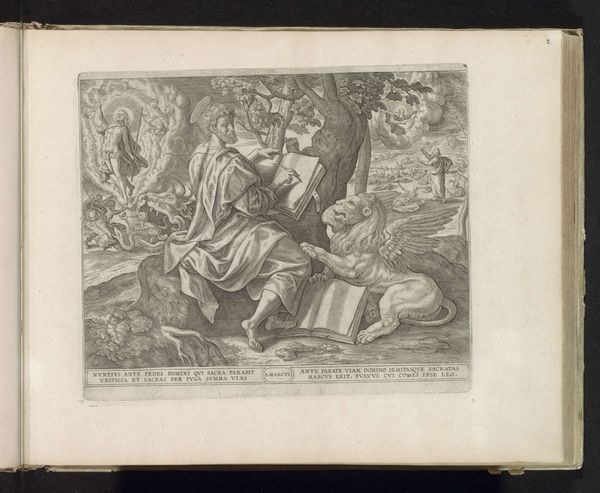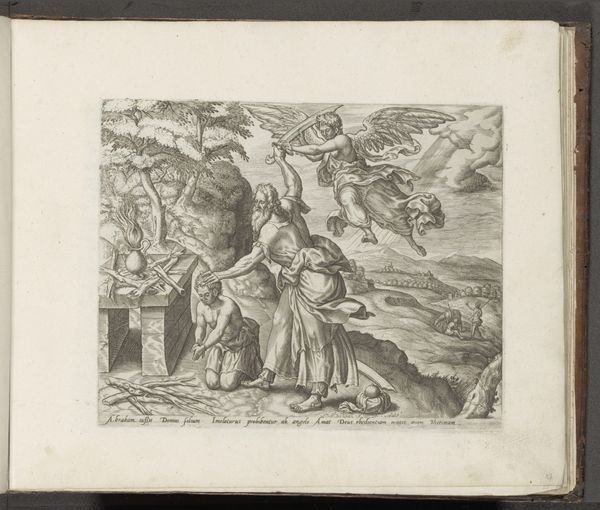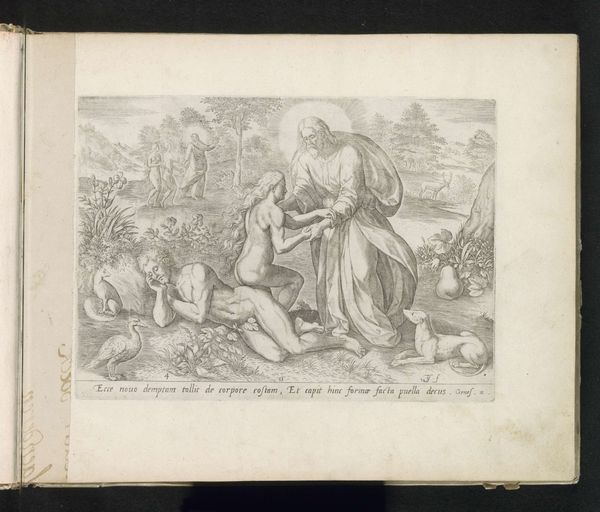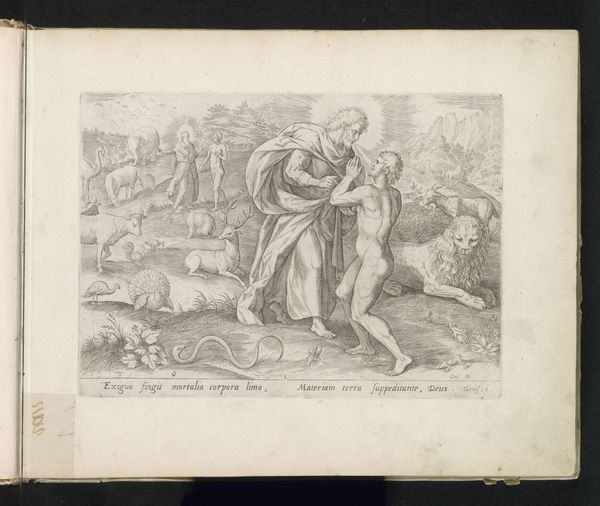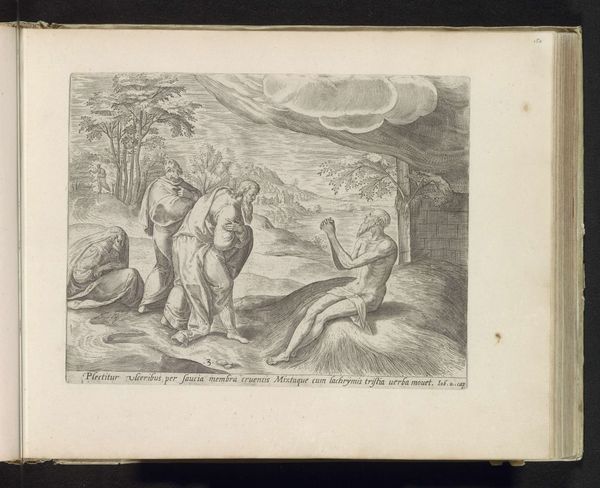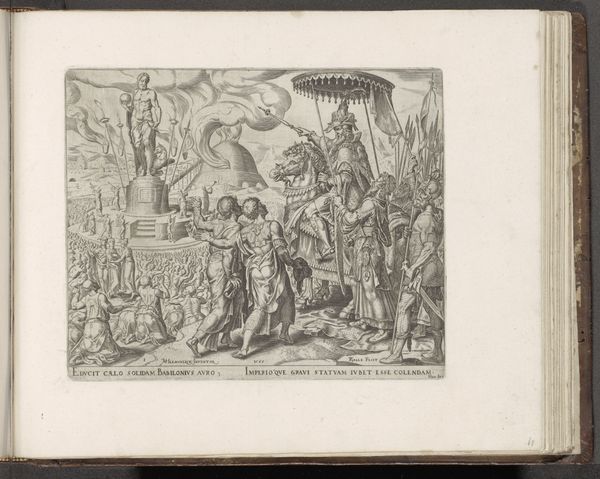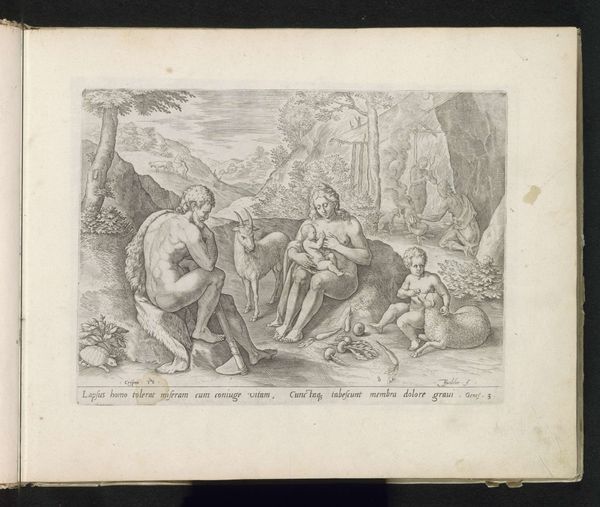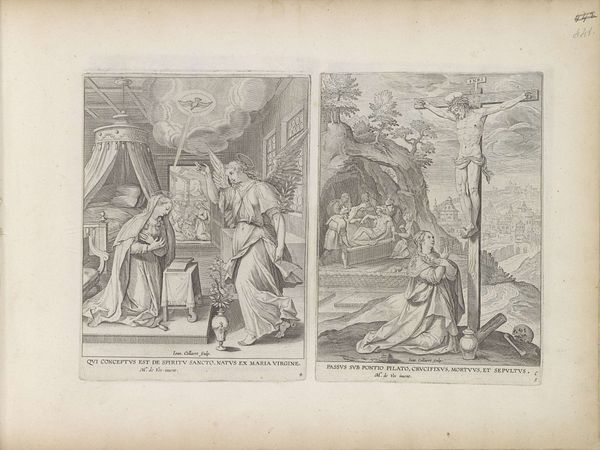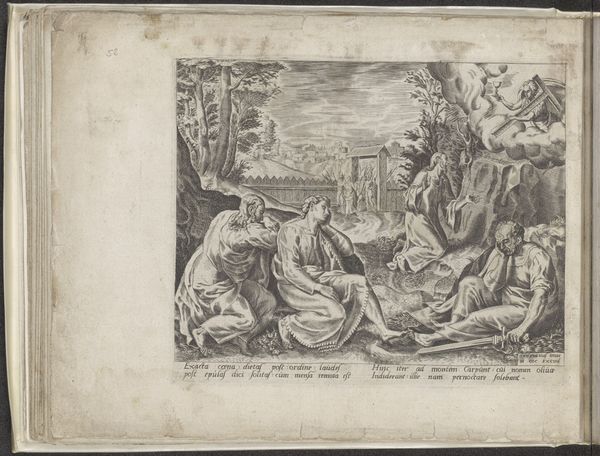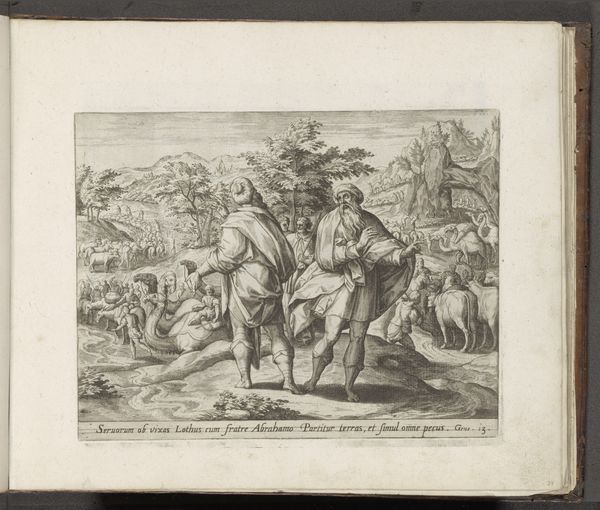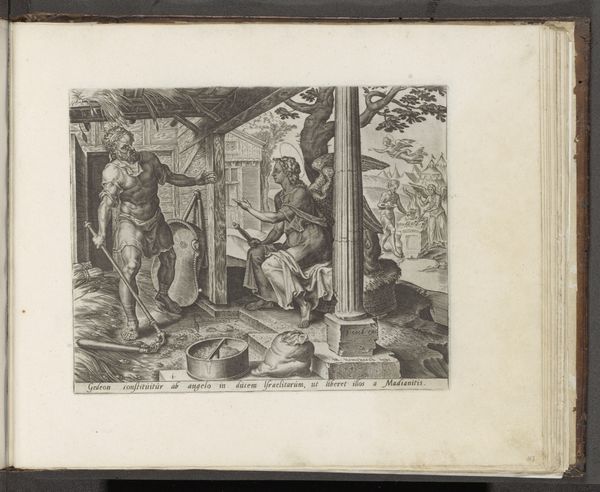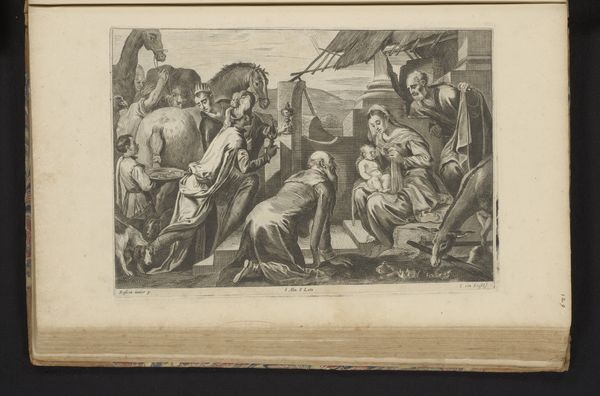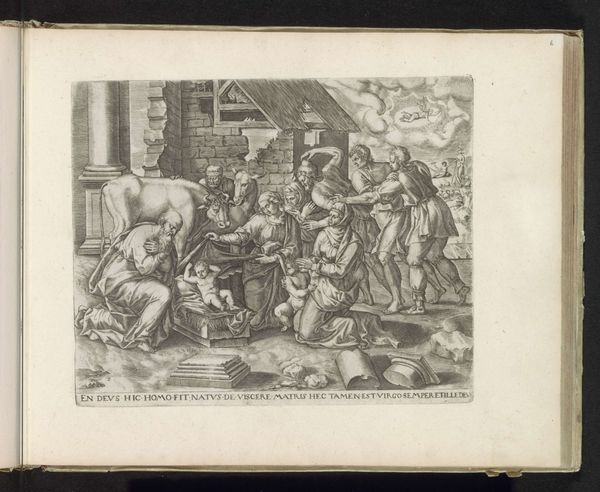
print, engraving
#
portrait
# print
#
landscape
#
figuration
#
line
#
genre-painting
#
history-painting
#
northern-renaissance
#
engraving
Dimensions: height 208 mm, width 264 mm
Copyright: Rijks Museum: Open Domain
Editor: This is "De evangelist Lucas schrijft het evangelie," or "The Evangelist Luke Writing the Gospel," an engraving created by Wierix before 1585. It’s currently held in the Rijksmuseum. I'm really struck by how detailed and precise the line work is. It gives the piece a delicate quality, but there's also this underlying sense of monumentality conveyed through Luke and the ox. What social or historical context informs this image? Curator: It's important to consider the Reformation when approaching a piece like this. Wierix lived during a time of great religious upheaval. Do you notice any subtle imagery or symbols that might relate to the Counter-Reformation or the broader religious debates of the period? Editor: Well, the figure of Luke, with the winged ox, clearly symbolizes his Gospel. The classical architectural elements and the carefully constructed landscape – these could be aimed to highlight tradition and theological stability during conflict? Curator: Exactly. Prints like these played a crucial role in disseminating religious ideas. Wierix, situated in the Netherlands, occupied a complicated place within this exchange, with different cities adhering to or resisting these ideologies. Who might be commissioning or buying such an image and what might they have done with it? Editor: That’s fascinating. Thinking about it that way really makes me consider how art could serve different social and political functions. Curator: Precisely! And the commercial aspect of printmaking is critical too. Prints were more affordable and widely available than paintings, allowing for broader access to religious imagery. Editor: This discussion has helped me realize how engravings could be so much more than just pretty pictures; they're active participants in broader cultural conversations! Curator: Indeed. Artworks carry complex socio-historical information, especially in times of significant change like the Reformation.
Comments
No comments
Be the first to comment and join the conversation on the ultimate creative platform.
